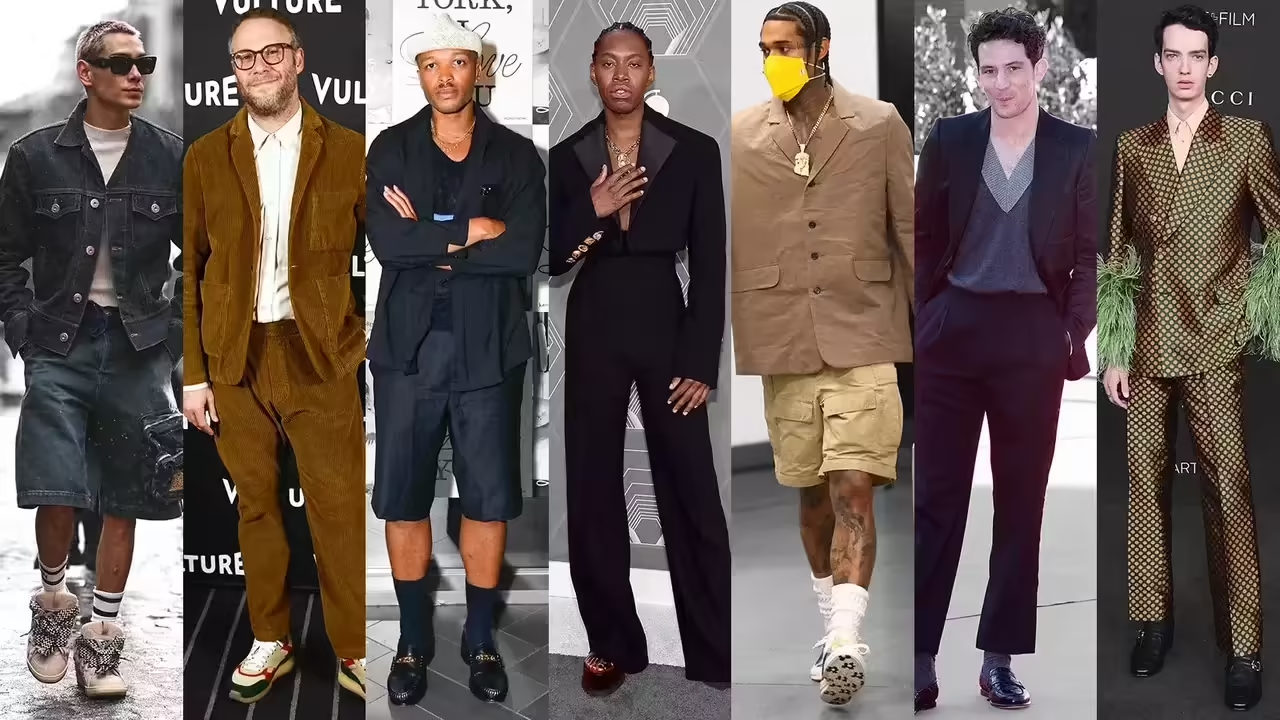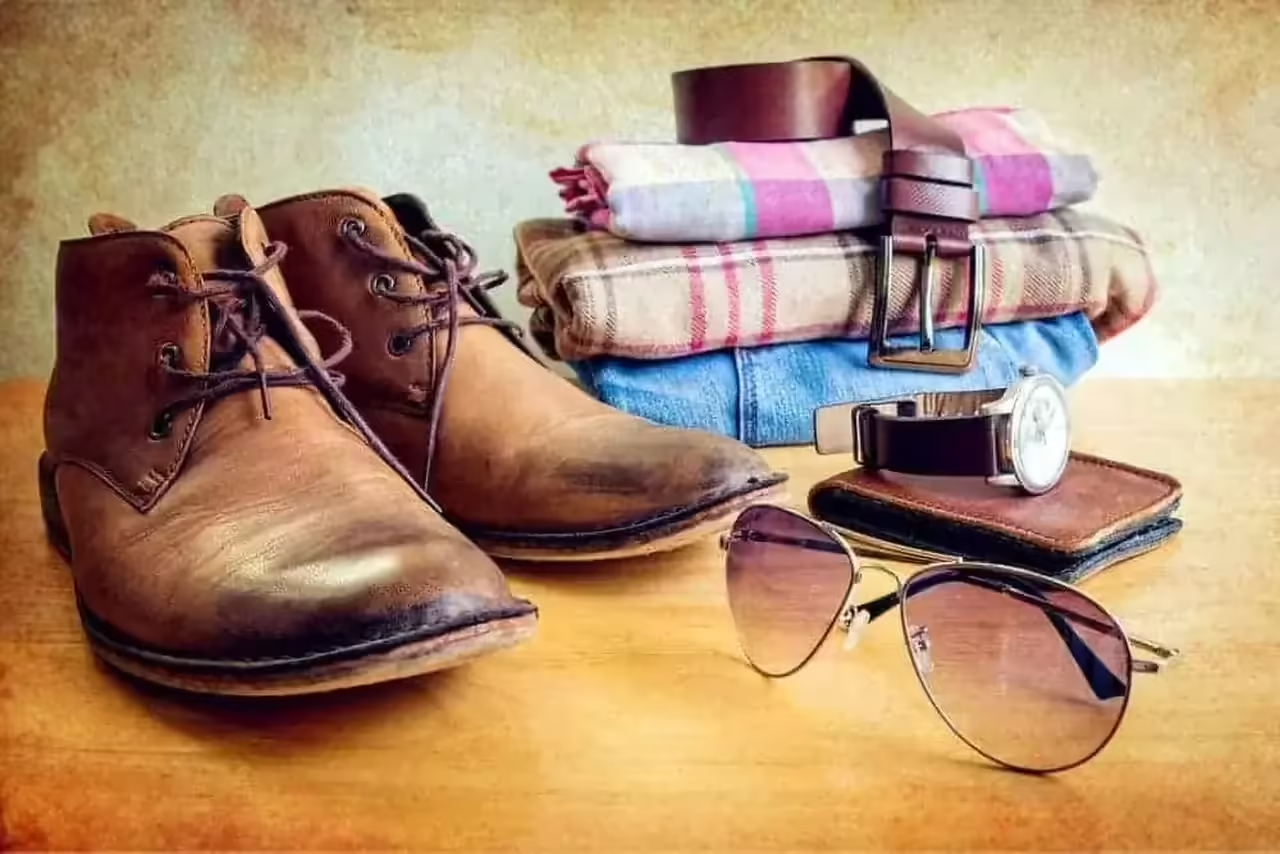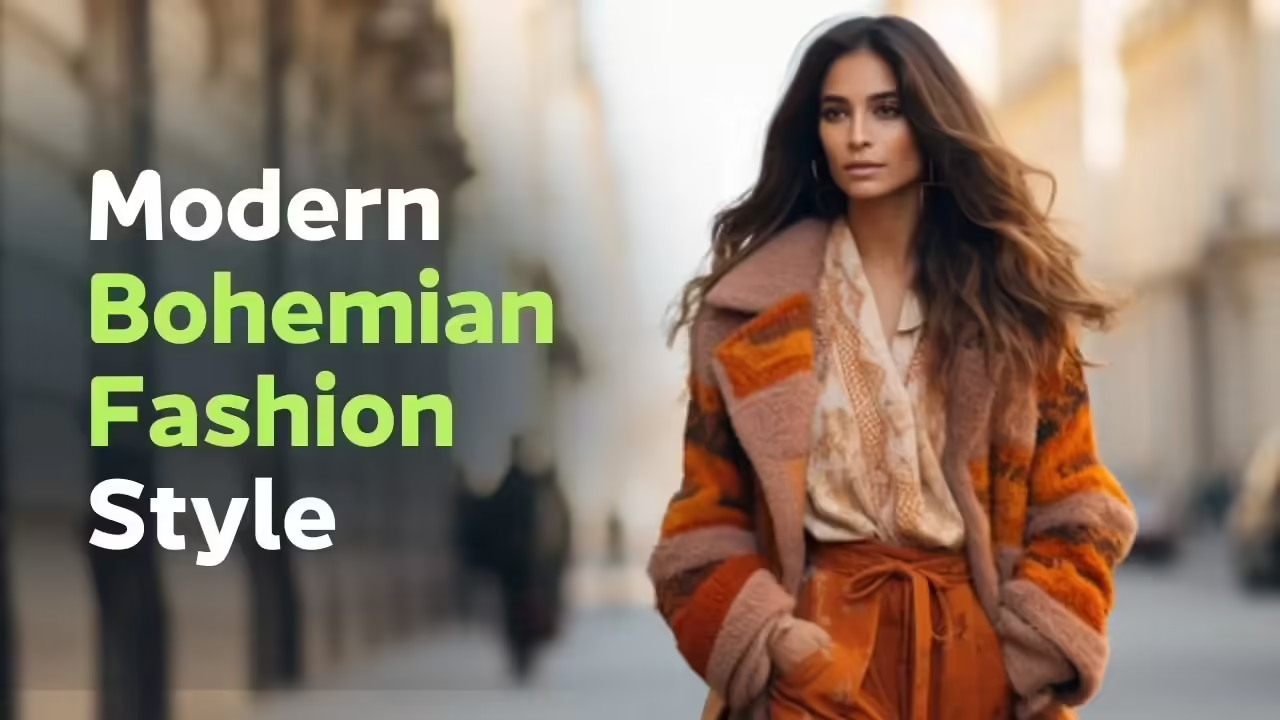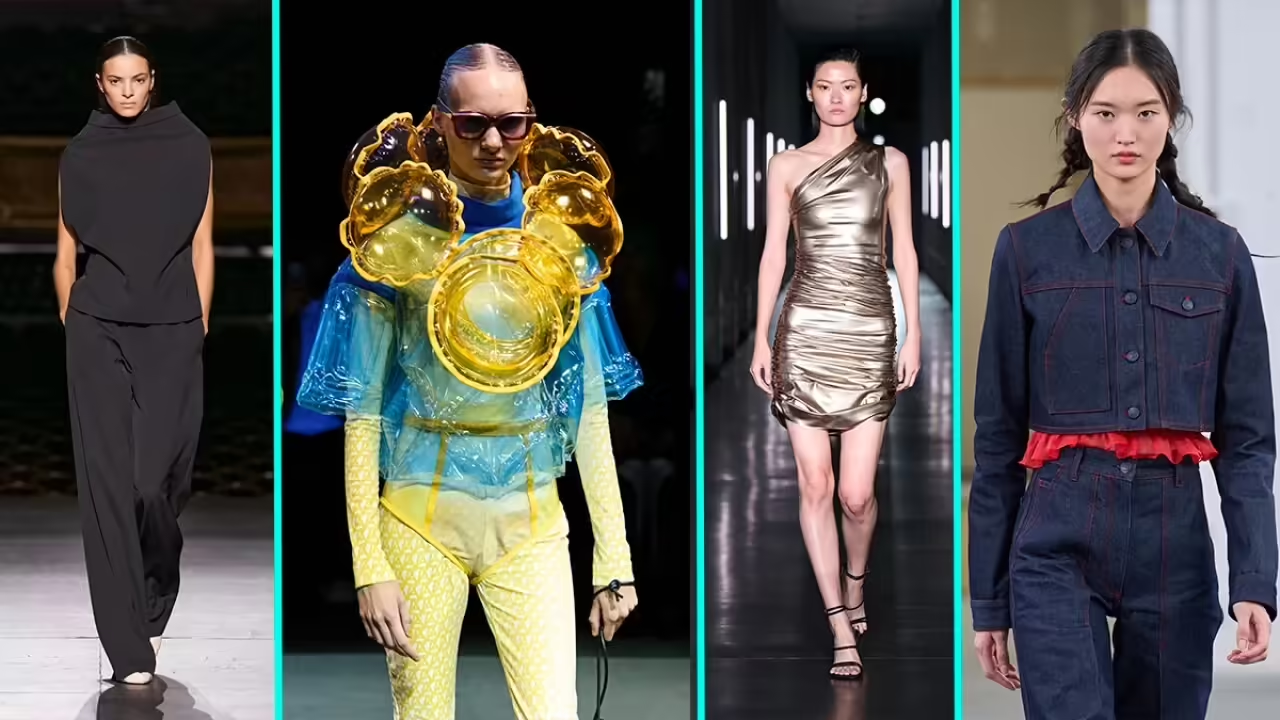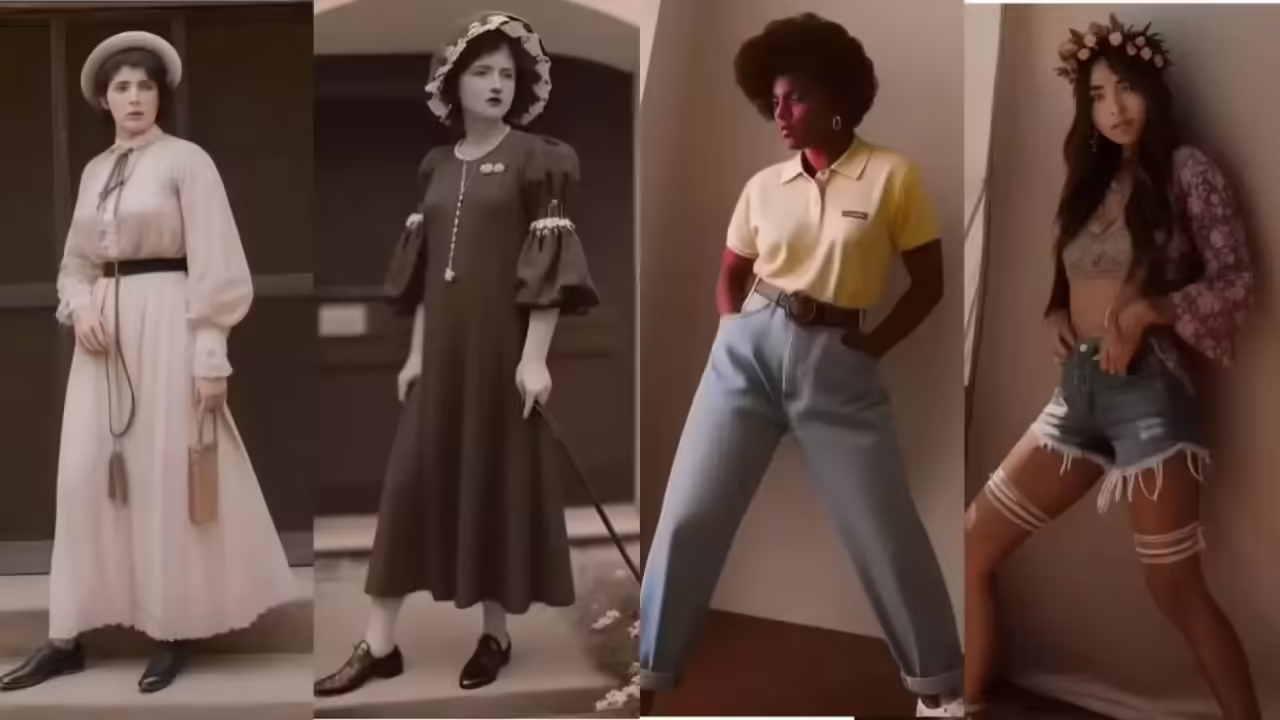
Antiquity and Middle Ages: Clothing as Identity and Status
Women’s fashion is a vivid reflection of cultural, social, and political evolution throughout history. From ancient times to the present day, the way women dress has been a powerful means of personal and collective expression. This article provides a brief overview of how women’s fashion has evolved, from the restrictions imposed by clothing to the glorious era of individual expression.
In ancient civilizations, women’s clothing not only served a practical function but also was a marker of identity and status. In cultures like the Greek and Roman, women often wore long tunics that reflected their position in society. The upper classes wore elaborate and luxurious garments, while the lower classes wore simpler and more functional clothes.
During the Middle Ages, women’s fashion was heavily influenced by religion and social norms. Women were expected to be fully covered, and modesty was a fundamental value. Dresses were long, with long sleeves and high necks, reflecting the idea of purity and modesty.
Renaissance and Baroque: The Emergence of Elegance and Luxury
The Renaissance marked a significant change in women’s fashion, with a focus on elegance and beauty. Dresses became more fitted, accentuating the female silhouette, and luxurious fabrics such as velvet and silk were used. Women of high society competed to wear the most exquisite garments, and fashion became a symbol of status and wealth.
In the Baroque period, fashion reached new heights of extravagance and opulence. Dresses were elaborate and adorned with lace, embroidery, and jewels. Court women sought to impress with their elaborate outfits, and fashion became an art form in itself.
19th Century: The Industrial Revolution and the Change in Women’s Fashion
The Industrial Revolution brought about radical changes in women’s fashion. With the introduction of the sewing machine and mass production of textiles, clothing became more accessible to a wider range of people. New styles such as the shirtwaist dress and the hoop skirt emerged, which were more practical and comfortable for everyday wear.
Additionally, the suffragist movement and the fight for women’s rights had an impact on fashion. Many women began wearing more functional and less restrictive clothing, symbolizing their struggle for gender equality.
20th and 21st Centuries: Individual Expression and Style Diversity
The 20th century saw an explosion of diversity in women’s fashion. From the elegant flapper-style dresses of the 1920s to the fashion liberation of the 1960s and the androgyny of the 1980s, women began to experiment with their personal style and challenge established norms.
In the 21st century, women’s fashion has become fertile ground for individual expression and style diversity. Women have access to a wide range of fashion options, from haute couture to sustainable and ethical fashion. Fashion has become a form of empowerment for women, allowing them to express their identity and personality in a unique and authentic way.
The Legacy of Corsets and Restrictive Fashion: Exploring How Women’s Fashion Was Marked by Garments That Limited Freedom of Movement and Expression
For centuries, women’s fashion has been marked by garments that not only adorned the body but also restricted it. One of the most iconic garments of this legacy is the corset. However, it was not the only one. From corsets to crinolines and long skirts, the history of women’s fashion is intertwined with garments that limited women’s freedom of movement and expression.
Corsets: Symbol of Beauty and Restraint
The corset, or stays, is possibly one of the most controversial garments in the history of women’s fashion. Popularized in the 16th and 17th centuries, the corset was designed to shape the female figure, emphasizing the waist and enhancing the bust. However, this pursuit of an idealized silhouette came at a high cost: physical restraint and, in some cases, permanent damage to women’s health.
Prolonged use of the corset could cause respiratory problems, rib deformities, and even displacement of internal organs. Despite these risks, the corset remained a staple in women’s wardrobes for centuries, reflecting the beauty standards and gender oppression of the time.
Crinolines and Voluminous Skirts: Limiting Movement
Another notable trend in women’s fashion was the use of crinolines and voluminous skirts during the 19th and early 20th centuries. These garments, designed to give volume and shape to skirts, significantly limited women’s movement. Walking, sitting, and even entering narrow doors became challenging tasks due to the size and stiffness of these garments.
Although crinolines and voluminous skirts did not exert the same physical pressure as corsets, they still represented a form of control over women’s bodies. The need to occupy space and maintain a certain appearance reinforced social expectations and gender norms of the time.
Evolution towards Functional and Comfortable Fashion
Fortunately, as the 20th century progressed, women’s fashion began to move away from restrictive garments in favor of more functional and comfortable styles. The feminist movement of the 1960s challenged traditional beauty standards and promoted the idea that fashion should be a tool of liberation, not oppression.
Today, women have a wide variety of fashion options that prioritize comfort, functionality, and personal expression. Contemporary designs seek to celebrate body diversity and offer garments that allow women to move with freedom and confidence.
The 20th-Century Revolution: Fashion and Women’s Emancipation
The 20th century witnessed a profound transformation in women’s fashion, largely influenced by the feminist movement and social changes seeking women’s emancipation. From pantsuits to unisex fashion, fashion became a means of expressing independence and gender equality. This article explores how the feminist movement and social changes influenced 20th-century fashion, marking a revolution in how women dressed and perceived themselves.
The Emergence of Pantsuits: Challenging Gender Norms
In the early 20th century, pants were considered exclusively male attire, and women who wore them were seen as transgressive. However, with the rise of the suffragist movement and women’s participation in the workforce during World War I, pantsuits became a symbol of women’s emancipation.
Figures like Coco Chanel played a crucial role in popularizing pantsuits for women, challenging gender norms and promoting the idea that women could be elegant and sophisticated without sacrificing comfort and functionality. Pants became an increasingly accepted fashion choice for women, allowing them to move freely and defy traditional gender roles.
Unisex Fashion: Celebrating Diversity and Equality
As the 20th century progressed, fashion began to move away from rigid divisions between masculine and feminine, giving way to a more inclusive and diverse approach. Unisex fashion emerged as a way to celebrate gender equality and expression diversity. Designers like Yves Saint Laurent introduced garments such as the women’s tuxedo, challenging gender conventions and promoting the idea that fashion should be accessible to all people, regardless of their gender identity.
Unisex fashion not only offered versatile and functional garments but also challenged social norms and encouraged acceptance of diversity in all its forms. This trend toward unisex fashion continued to gain momentum in the 21st century, with designers and brands advocating for gender equality and inclusion in the fashion industry.
Style Icons Through the Decades: Celebrating Iconic Figures of Women’s Fashion
The history of fashion is filled with extraordinary women who have challenged norms, set trends, and left an indelible mark on the world of style. From Audrey Hepburn’s timeless elegance to Madonna’s bold rebellion, these style icons have inspired generations with their individuality, creativity, and audacity. Below, we highlight some of the most iconic figures of women’s fashion throughout the decades:
Coco Chanel (1883-1971)
Coco Chanel is one of the most influential figures in fashion history. She revolutionized the industry with her innovative approach and elegant, minimalist style. Chanel popularized iconic garments such as the Little Black Dress and the tweed suit, and her legacy continues to this day in the fashion house she founded.
Audrey Hepburn (1929-1993)
Audrey Hepburn epitomized the elegance and glamour of classic Hollywood. Her timeless style, characterized by simple dresses and clean lines, made her a fashion icon. Hepburn is remembered for her role in “Breakfast at Tiffany’s” and her collaboration with designer Hubert de Givenchy, whose partnership resulted in some of the most memorable looks in cinema.
Marilyn Monroe (1926-1962)
Marilyn Monroe captivated the world with her beauty, sensuality, and unmistakable style. Her iconic white dress in “The Seven Year Itch” has become an iconic image of fashion. Monroe challenged the norms of the time with her bold femininity and provocative attitude, leaving a lasting legacy in popular culture.
Twiggy (1949-present)
Twiggy, whose real name is Lesley Lawson, was the iconic face of 1960s fashion. With her slim figure and pixie haircut, Twiggy embodied the aesthetic of Swinging London. Her impact on the fashion and culture of the time remains relevant to this day.
Madonna (1958-present)
Madonna is known not only for her music but also for her provocative style and her ability to constantly reinvent herself. From her “Material Girl” look in the 1980s to her more androgynous aesthetic in the 1990s, Madonna has constantly challenged fashion norms and set trends throughout the decades.
Rihanna (1988-present)
Rihanna has proven to be a disruptive force in the fashion industry. With her daring style and willingness to experiment with fashion, Rihanna has challenged conventions and set trends that have captured the world’s attention. From her Fenty fashion line to her striking presence on the red carpet, Rihanna continues to leave an indelible mark on the world of style.
These are just a few of the many iconic figures who have left an indelible mark on women’s fashion throughout the decades. Their creativity, individuality, and audacity continue to inspire future generations to challenge norms and express themselves through fashion.
Emerging and Future Trends in Women’s Fashion
Women’s fashion is constantly evolving, influenced by a variety of factors ranging from social and cultural changes to technological advancements. As we look towards the future, we can identify several emerging trends that are shaping the landscape of women’s fashion and promising to transform the industry in exciting and meaningful ways. Among these trends are wearable technology, inclusive fashion, and the reinvention of classic styles.
Wearable Technology and Smart Fashion
Wearable technology has begun to make significant inroads into the world of women’s fashion, merging functionality with style in an innovative way. From garments that monitor health and fitness to accessories that integrate augmented reality, smart fashion is offering new ways to interact with clothing and the surrounding environment.
In the future, we can expect to see further development of wearable technology in women’s fashion, with garments that adapt to the weather, change color according to mood, or even incorporate solar charging technology to power integrated electronic devices.
Inclusive Fashion and Diverse Representation
Inclusive fashion is another important trend gaining momentum in the industry. Increasingly, brands are recognizing the importance of representing diversity of bodies, identities, and experiences in their collections. This includes manufacturing garments in a wide range of sizes, as well as hiring models of different ethnicities, genders, and physical abilities.
In the future, inclusive fashion will continue to be a priority for many brands, with a renewed focus on celebrating diversity in all its forms. This not only involves offering fashion options for a wide variety of bodies but also promoting inclusion and representation at all stages of the design and production process.
Reinvention of Classic Styles and Sustainability
As environmental awareness continues to grow, so does interest in sustainable fashion and the reinvention of classic styles. Many brands are turning to ethical manufacturing practices and recycled materials to reduce their impact on the environment. At the same time, there is a renewed interest in reviving classic and timeless styles that endure beyond fleeting trends.
In the future, we can expect to see increased adoption of sustainable fashion and the reinvention of classic styles in women’s fashion. This includes garments that are designed to stand the test of time, as well as the use of traditional and artisanal manufacturing techniques that minimize waste and promote durability.
